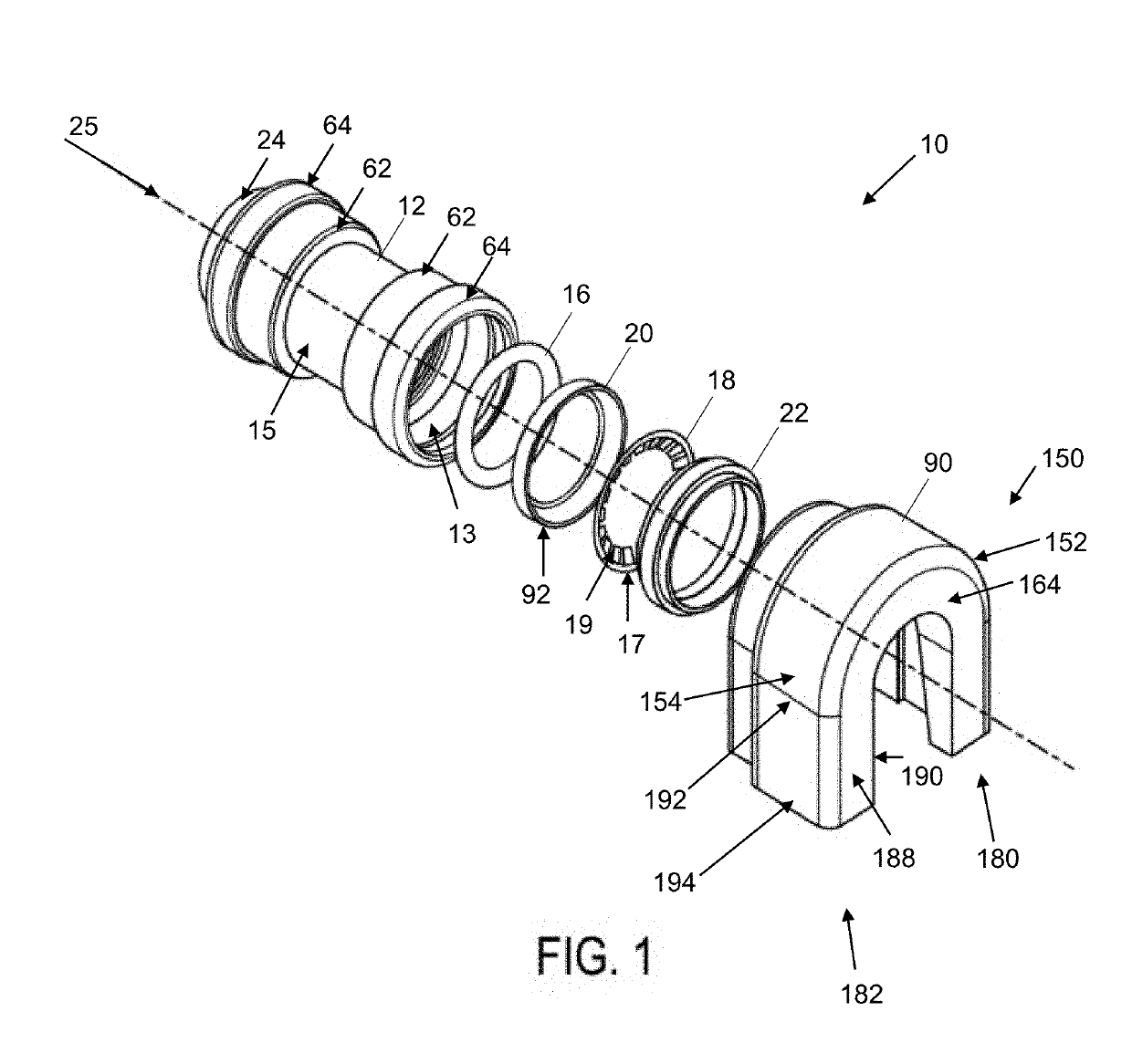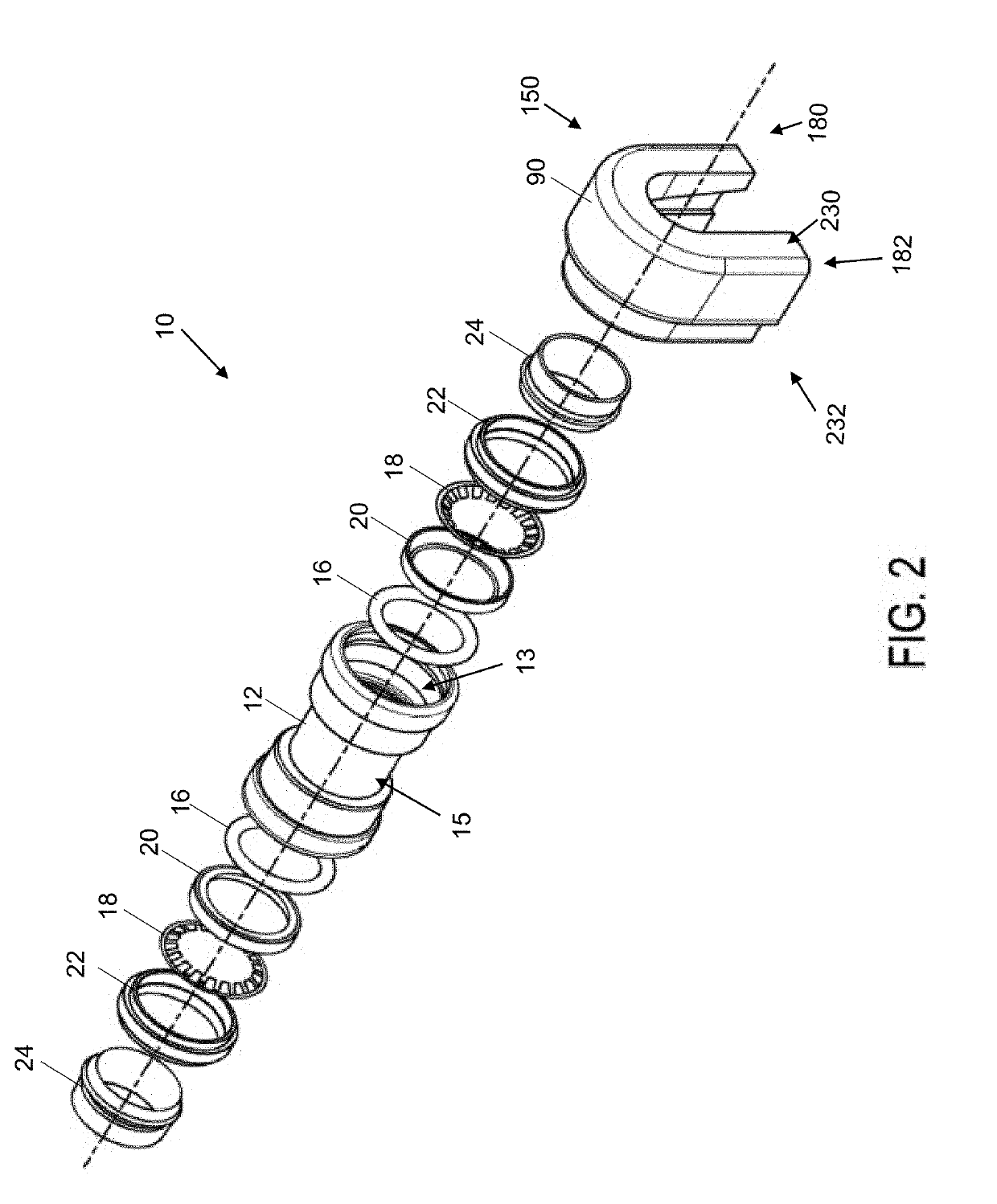Push-to-connect fitting assembly and device
a technology of push-to-connect and assembly, which is applied in the direction of pipe-joints, fluid pressure sealed joints, sleeves/socket joints, etc., can solve the problems of reducing the overall production capacity, and adding significant labor and manufacturing costs to the final product cost. , to achieve the effect of facilitating inspection and re-us
- Summary
- Abstract
- Description
- Claims
- Application Information
AI Technical Summary
Benefits of technology
Problems solved by technology
Method used
Image
Examples
Embodiment Construction
[0037]In the push-to-connect fitting assembly 10 according to embodiments of the present disclosure as shown in FIGS. 1 and 2, elements of the assembly as shown include: a fitting (i.e., fitting body member or main body component) 12 having an interior wall 13 and exterior wall 15, a fastening ring 18, one or more sealing members 16 (which can be optionally lubricated), a sealing ring support member 20, a tube support member 22 and a release pusher 24. The fastening ring 18 and sealing member 16 together provide one embodiment of a packing arrangement for the present disclosure, and each has an internal diameter that allows for smooth and snug engagement of a piping or tubing element external surface (not shown) when inserted into the opening 55. The fitting 12 inner wall defines a pipe receiving opening 55 extending axially therethrough along axis 25. In one embodiment, the interior diameters of the fastening ring 18 (as measured to the teeth 19 and not the ring cylindrical base 17...
PUM
 Login to View More
Login to View More Abstract
Description
Claims
Application Information
 Login to View More
Login to View More - R&D
- Intellectual Property
- Life Sciences
- Materials
- Tech Scout
- Unparalleled Data Quality
- Higher Quality Content
- 60% Fewer Hallucinations
Browse by: Latest US Patents, China's latest patents, Technical Efficacy Thesaurus, Application Domain, Technology Topic, Popular Technical Reports.
© 2025 PatSnap. All rights reserved.Legal|Privacy policy|Modern Slavery Act Transparency Statement|Sitemap|About US| Contact US: help@patsnap.com



